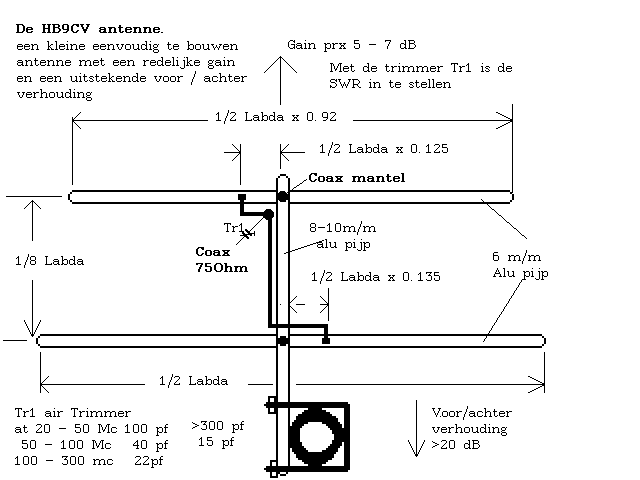
The "Windom Antenna" was described by Loren G. Windom W8GZ. It could be an ideal wire aerial for use in restricted spaces for multi-band operation. It may also be an good candidate for portable work.
It is a wire antenna, similar to a dipole, but unlike a dipole or doublet which is fed at the exact centre, a Windom or Off Centre Fed Dipole, as the name suggests, has the feed point off center. Current versions of the Windom have a balun at the feed point which is fed with coaxial cable. As with all aerials the aerial should be as high as possible. With the feed point at between 20 and 40 feet above ground the typical claimed impedance will be somewhere in the region of 200 Ohms so a 4:1 balun will typically be required. At greater heights, and depending upon the exact position of the feed point, the impedance may be higher and a 5:1 or 6:1 balun might be a better choice although balun losses will be greater.
The point at which a Windom is fed in the original design, which used an open wire to feed the aerial, was 15 percent off-centre. The current designs, which are fed with coaxial cable, are typically fed about 33 percent off centre, so one leg is 67 percent of the total length and the other leg is 33 percent of the overall length of the aerial.
The bands that are covered depends upon the overall length of the aerial:
11 metres long (approx) should cover 20m, 15m and 10m and the WARC bands with a tuner.
21 metres long (approx) should cover 40m, 20m, 15m and the 10m bands and WARC with a tuner.
41 metres long (approx) should cover 80m, 40m, 20m, 15m and 10m and WARC with a tuner.
80 metres long (approx) should cover 160m, 80m, 40m, 20m, 15m and 10m and WARC with a tuner.
Cut the aerial for the lowest band to be used. In imperial measurements using a familiar formula:
The longer leg will be 468 divided by the frequency and multiplied by .67 = length in feet
The shorter leg will be 468 divided by the frequency and multiplied by .33 = length in feet
According to which sources one refers, the formula can also be found as:
62.2% for one side and 37.8% for the other leg. So:
The longer leg will be 468 divided by the frequency and multiplied by .622 = length in feet
The shorter leg will be 468 divided by the frequency and multiplied by .378 = length in feet






































